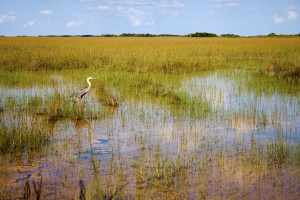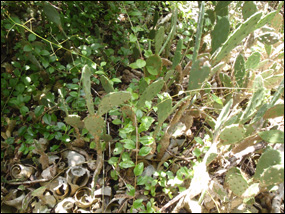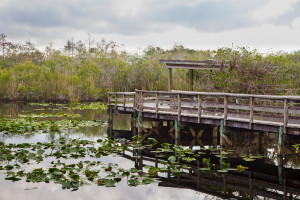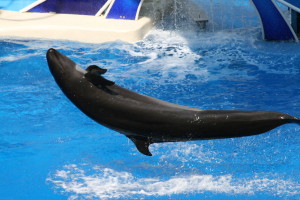 In December, President Obama signed a bill that authorized $2 billion to go towards restoration efforts in the Everglades. This bill was called The Water Infrastructure Improvements for the Nation (WIIN) Act of 2016. This act provides half the funding needed for the Central Everglades Planning Project, and the other half of the funding will come from Florida.
In December, President Obama signed a bill that authorized $2 billion to go towards restoration efforts in the Everglades. This bill was called The Water Infrastructure Improvements for the Nation (WIIN) Act of 2016. This act provides half the funding needed for the Central Everglades Planning Project, and the other half of the funding will come from Florida.
According to the Everglades foundation, the Central Everglades Planning Project will remove levees, so a more natural flow of the water will flow across the plain. As of now, and for decades, the water is diverted east and west. With this project, the water will no longer be restricted from flowing south from Lake Okeechobee, which is the natural flow. For many years, people have been complaining about the negative impact of this water restriction and were looking for a permanent fix to redirect the water to its natural flow.
This issue is important to many Floridians because they want to ensure their water is clean; the water people used to drink, shower, water their lawn, and so on, comes from the Everglades.
This bill was pushed by Congresswoman Lois Frankel of West Palm Beach, Congressman Ted Deutch of Boca Raton, and Congressman Patrick Murphy of Stuart. Congressman Deutch hopes there will be a future commitment on the federal level for funding.
With this project, the state is also looking for solutions on where to put the water. It has been proposed that the state could by 60,000 acres of land in western Palm Beach County, which is currently owned by sugar producers. This land would be used as a reservoir to store water from the Lake, so it will no longer run east and west. This will be further discussed by state lawmakers in March of this year (2017).
Visit the Everglades
The Everglades is one of the world’s gems, and thankfully more efforts are being taken to restore it before it disappears. If you want to take a trip through this beautiful wetland, jump on an airboat tour with Captain Mitch. Captain Mitch’s airboat tours will give you an up-close-and-personal look into this mystical place. To book an airboat tour, click here or call 800-368-0065.
 Did you know cacti and succulents grow in the Everglades? Surprising, right? These plants don’t just grow in deserts. In fact, many grow in tropical and subtropical climates. The species, native to the Everglades, thrive off the frequent rainfall and the sunny dates. They require a balance of wet and dry conditions.
Did you know cacti and succulents grow in the Everglades? Surprising, right? These plants don’t just grow in deserts. In fact, many grow in tropical and subtropical climates. The species, native to the Everglades, thrive off the frequent rainfall and the sunny dates. They require a balance of wet and dry conditions. Want to take a trip to the Everglades? It’s certainly a once-in-a-lifetime experience for many. On an airboat tour with Captain Mitch, you’ll be able to get up-close views of the beautiful surroundings, along with the opportunity for many wildlife sightings. However, people often have many questions before entering the Everglades. The National Park Service has many Frequently Asked Questions (FAQ) on its website to help people be better prepared for their trip to the Everglades. Below, we wanted to share some of these questions with you, so you can have a great time and feel comforted knowing as much as possible before you jump on a tour and explore the wetland.
Want to take a trip to the Everglades? It’s certainly a once-in-a-lifetime experience for many. On an airboat tour with Captain Mitch, you’ll be able to get up-close views of the beautiful surroundings, along with the opportunity for many wildlife sightings. However, people often have many questions before entering the Everglades. The National Park Service has many Frequently Asked Questions (FAQ) on its website to help people be better prepared for their trip to the Everglades. Below, we wanted to share some of these questions with you, so you can have a great time and feel comforted knowing as much as possible before you jump on a tour and explore the wetland. What is a false killer whale? Well, its name is misleading. The false killer whale isn’t actually related to the killer whale, but rather, it’s a member of the dolphin family. This dolphin is also known as ‘blackfish.’ In mid-January, 95 dolphins stranded themselves on a remote coast along Hog Key in the Everglades National Park. Despite rescue efforts, 82 of the dolphins died. According to the National Oceanic and Atmospheric Administration, this event is the largest mass stranding of fall killer whales ever in Florida. Many of the whales were deeply stuck in the mangroves and it was extremely difficult for rescue efforts to be successful. The last time a stranding occurred was back in 1986 when 3 false killer whales out of a group of 40 were stranded close to Cedar Key.
What is a false killer whale? Well, its name is misleading. The false killer whale isn’t actually related to the killer whale, but rather, it’s a member of the dolphin family. This dolphin is also known as ‘blackfish.’ In mid-January, 95 dolphins stranded themselves on a remote coast along Hog Key in the Everglades National Park. Despite rescue efforts, 82 of the dolphins died. According to the National Oceanic and Atmospheric Administration, this event is the largest mass stranding of fall killer whales ever in Florida. Many of the whales were deeply stuck in the mangroves and it was extremely difficult for rescue efforts to be successful. The last time a stranding occurred was back in 1986 when 3 false killer whales out of a group of 40 were stranded close to Cedar Key.





